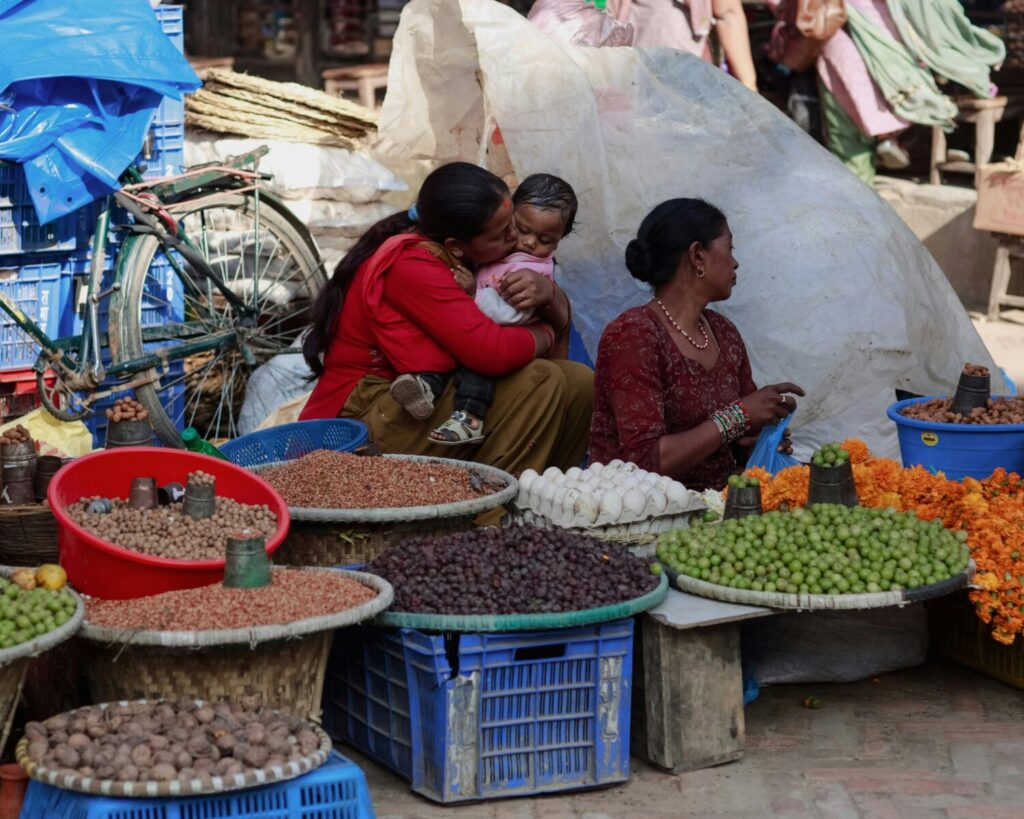Did you know that you can also experience your international volunteering journey in Nepal?
Nepal is one of the many destinations in Asia where Cooperating Volunteers participates in different projects. In this case, our programs include childcare, teaching in monasteries, teaching in kindergartens and schools, medical assistance, support for people with special needs, English teaching, agriculture and rural work, construction and renovation, and dentistry.
If you choose it as your destination for this journey, during your free time, you will be able to enjoy this magical country. In fact, on the blog, you can find some old posts about must-visit places.
Because, despite being a meaningful trip aimed at directly impacting the transformation of different communities, it is also a unique opportunity to get to know its culture, landscapes, and everything it has to offer.

Today, we want to talk about one of our favorite ways to explore a destination… and without a doubt, it is through its gastronomy. This way, we get to know local products, cooking methods, and dishes we had never heard of before.
Here, you will find the typical and popular dishes that you cannot miss.
TYPICAL DISHES OF NEPAL
Nepali cuisine is highly influenced by Indian and Tibetan cuisine, which is reflected in its flavors, colors, and ingredients.
– MOMOS
One of the most popular dishes in the country, these dumplings are filled with meat or vegetables and are a direct influence of Tibetan and Chinese cuisine.
There are different types:
· Steamed Momos: The most common and healthiest version since they are cooked by steaming.
· Fried Momos: Fried in oil, making them crispy on the outside.
· Kothey Momos: Pan-seared on one side and then steamed.
· Jhol Momos: Served in a spiced, spicy broth.
· Chilli Momos: Stir-fried with chili sauce, Indo-Chinese style.
The most common fillings include chicken, buffalo, pork, cheese, and vegetables (cabbage, carrot, and onion). They are usually accompanied by onion, garlic, ginger, cilantro, soy sauce, cumin, turmeric, salt, and pepper.
For the dough, you need wheat flour, water, salt, and oil.
They are served with achar, a spicy tomato and sesame sauce. You can choose your preferred cooking method (steamed, fried, or in broth).
It is very popular to watch them being prepared, and although it seems easy, the technique is an art. The dough ingredients are mixed until a smooth, elastic dough is obtained, which is then covered with a cloth and left to rest for 30 minutes. Once ready, it is cut into circles, filled, folded, and sealed by forming pleats.
– DAL BHAT
This is Nepal’s traditional and staple dish, consumed daily by most of the population. It consists of dal (lentil soup) and bhat (white rice), accompanied by side dishes such as curried vegetables, pickles, and sometimes meat or yogurt. It is a nutritious and balanced meal, ideal for providing energy.
The main ingredients for dal are: red or yellow lentils, water, chopped tomato, turmeric, ground cumin, mustard seeds, garlic, ginger, oil or clarified butter, salt, and cilantro to taste.
For the bhat: rice, water, and salt.
It is sometimes served with vegetable curry made with cauliflower, potato, and carrot, sautéed spinach, spicy pickles, and chicken or lamb curry.
Cooking the rice is very simple, as it is boiled until it absorbs the water, a process that takes about 15 minutes.
On the other hand, preparing the lentil soup takes a bit longer but is still simple. The lentils are boiled with tomato and turmeric until tender, and separately, the remaining ingredients are sautéed to create a flavorful base, which is then added to the lentils.
There are some variations, such as Dal Bhat Tarkari, which includes vegetable curry as a side, or adding dried red chili to the sautéed base for a spicy touch.
And with that, we have Nepal’s essential dish!
– CHOWMEIN
Chowmein is a very popular dish in Nepal, influenced by Chinese cuisine but adapted with local flavors and spices. It consists of stir-fried noodles with vegetables, meat (chicken, pork, or buffalo), and a mix of sauces such as soy sauce, vinegar, and sometimes a touch of chili for a spicy kick.
The main ingredients, besides those mentioned, also include: carrot, cabbage, bell peppers, onion, garlic, ginger, tomato sauce, mustard or vegetable oil, salt, and pepper.
To prepare this dish, the noodles are boiled until al dente, while the meat is stir-fried with garlic and ginger in a wok or pan. The vegetables are then added over high heat to maintain their texture, and finally, the noodles are mixed in to absorb all the flavors.
To serve, sauces and seasonings are added to taste, and it is usually garnished with scallions or cilantro.
In Nepal, chowmein is found on almost every street and restaurant, often served with ketchup and spicy pickles for an extra flavor boost.

– THUKPA
Thukpa, or noodle soup, is a popular Tibetan-Nepali dish, especially in mountainous regions where temperatures are very low. It is frequently cooked as a warm and comforting meal.
The main ingredients are: wheat or rice noodles, chicken, lamb, buffalo, or tofu for a vegetarian option, vegetables (carrot, cabbage, spinach, tomato, onion, and bell peppers), garlic and ginger, chicken or vegetable broth, soy sauce, black pepper and chili powder, salt, mustard or vegetable oil, and cilantro for garnish.
To prepare, oil is heated in a pot, and garlic and ginger are sautéed. The chosen protein is then added until golden brown. Next, all the vegetables are incorporated, and the broth is poured in, allowing all the flavors to blend well. The noodles cook in the same broth, and once done, the soup is served with seasonings to taste.
This delicious dish is perfect for staying warm and nourished in cold areas.
– CHATAMARI
Known as Nepali pizza, this is a traditional dish from the Newar community, consisting of a rice crepe topped with various savory ingredients.
It is usually served as an appetizer or light meal, especially during festivals and celebrations, though it is commonly found at street stalls.
The main ingredients for the batter are rice flour, water, and salt, while toppings are optional and can be customized. The most popular ones include minced meat, egg, chopped onion, diced tomato, bell peppers, garlic and ginger, chili powder, salt, and pepper.
To ensure the toppings cook well and the base turns crispy, the pan is covered while cooking. This process is quick, and once ready, it is served and enjoyed with Nepali pickles or tomato sauce.
– SEL ROTI
A popular dish during festivals, especially Dashain** and Tihar, known as the Nepali rice doughnut.
It is a ring-shaped fried bread made from rice flour, crispy on the outside and soft inside, with a slightly sweet taste. It is often enjoyed with yogurt, tea, or pickles.
The main ingredients are overnight-soaked rice, sugar, ghee or butter, milk or water, ripe banana, cardamom, and oil.
The batter is made by grinding the soaked rice with sugar, milk, banana, and cardamom. It is left to rest for 30 minutes to improve the texture. Once ready, it is fried until golden brown.
This crispy, slightly sweet delicacy is also perfect for special breakfasts.

There are other side dishes like Gundruk (fermented mustard or spinach leaves) and Sukuti (dried buffalo or goat meat, sometimes fried).
For sweets, Yomari stands out—a rice dough dumpling filled with molasses and sesame seeds.
If you want to learn more about Nepali cuisine, we are waiting for you in Nepal!




